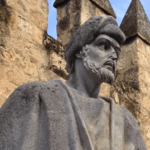
We know that understanding the past is very necessary if we wish to understand the present. This is especially so with the sectarian conflicts that still exist between two main sects: the Sunnīs and the Shīʽa. It even erupted between Sunnīs and Ibāḍī Kharijites in the Ghardaïa region of Algeria. This conflict between Islamic sects has been going on since ancient times, albeit in different forms, ever since Great Tribulation (al-Fitna al-Kubrā) over 1,400 years ago. This extended study is an attempt to present the intellectual achievement of Joseph van Ess, perhaps the foremost exponent of Orientalist research in the 20th century, and his ground-breaking research on the early period of Islamic thought and the course and fate of Islamic theological speculation that has led to the current crises.
BY HASHEM SALEH
THERE IS A DIFFERENCE between two disciplines: the ‘ilm al-kalām, and the ‘ilm al-fiqh. They are not the same thing, contrary to what we may at times deludedly imagine. But if ‘ilm al-kalām (or ‘theology’ in Christian terminology, or ‘ilm al-ilāhiyāt according to ancient Islamic terminology) has become extinct in our history, ‘ilm al-fiqh (‘jurisprudence’) has come to fully prevail and dominate.
Herein lies the major calamity. We note that the great German researcher Josef Van Ess applied the historical method to the Islamic heritage and came up with new results and invaluable discoveries. German scholars are well-known all over Europe and the West as champions of the linguistic-historical, or philological-historical approach. When the Germans do something, they master it completely: from making Mercedes cars to curricula for historical sciences, right up to philosophy! Who can outperform the Germans in methodology, terminology, and in clarifying the most complex, ambiguous and intractable problems?
One should note that the historical-critical approach is differs entirely from the reverential, unquestioning mindset prevalent among traditional believers, whether they be Muslims, Christians or Jews. For this reason, it shocks them so much that they fight against it, disbelieve it and try to prevent its application to the sacred texts. This is what the Vatican long attempted before succumbing to the fait accompli and the logic of modernity. And it is what the shaykhs of Islam today are similarly trying to prevent. The traditional Muslim believes that religion stands above history: it influences it but is not affected by it. For this reason Muslims in general believe that Islam has remained the same throughout history from beginning to end. They believe that it has not changed nor altered with the changes of age and time. This is an ahistorical view of heritage. Yet it dominates the minds of the masses and even the minds of most intellectuals, with the exception of some enlightened Muslims open to the light of reason and science. On these major theological and doctrinal issues, as well as the issues of heresy and takfīr in Islam, Van Ess published his work The Beginnings of Islamic Theology, as an introduction to his famous encyclopedia Theologie und Gesellschaft im 2. und 3. Jahrhundert Hidschra. Eine Geschichte des religiösen Denkens im frühen Islam.[1]
The central thesis of the book
Professor Josef Van Ess set out to prove the validity of the following thesis: that jurisprudence gradually prevailed over theology and philosophy in the land of Islam. This happened at the crucial historical juncture separating the second/third centuries of the Hijra, that is, the eighth and ninth centuries AD. By this, we understand why the instinct to transmit came to dominate over the intellect, why imitation replaced renewal, and repetition and regurgitation too the place of innovation and creativity in both the Arab and Islamic worlds. Put another way, if applying the Sharīʻa and ancient fiqh is something that preoccupies the minds of Muslims today, as opposed to delving into the meanings and secrets of the Qur’ān, then this is by no means a mere coincidence. There are deep reasons for this attitude that now prevails throughout the Muslim world. It should be noted that the actions of present-day extremists (and indeed earlier ones too) date back to that same crucial period in the history of Islam, when the Ḥanbalīs triumphed over the Mu’tazilīs, and the jurists prevailed over the philosophers.
The contemporary Muslim is now a prisoner of himself, whether he likes it or not. Who can get out of this cocoon? Who can break the captivity?
Hence we may understand why fiqh dominates the Islamic world today, and not the philosophy of religion or enlightenment theology, for example. One just has to see the fatwās of the shaykhs that populate the satellite channels today, where they talk about all and everything. Demand for them increases daily, and people ask them about all manner of things: Is this or that lawful or forbidden? Is this impure or pure? And on it goes. It at times gets to the point of something close to an obsession: How should we enter the toilet: with the right foot or with the left? Well, with the left, of course! Because entering the right foot is condemned in the Qur’ān. It can also get comical: Is it permissible to breastfeed an adult or not? We all know how this ‘serious’ issue preoccupied the Arab press for two years and still does.
Yet how is it that a contemporary Muslim can apply all the provisions of fiqh and all the infinitesimal details of the Sharīʻa, and all its prohibitions in the modern era? This is the question that preoccupies the minds of believers, precisely because the application of Sharīʻa law in its entirety is difficult to carry out. There are some, for example, who neglect to pray five times a day, yet they fast during Ramadan and refrain from eating pork or drinking alcohol. They thus perform some religious duties but neglect others. It is simply impossible to keep to all of them. One should keep in mind here that every believer fears God;s wrath upon him. This is normal. But what can he be expected to do if in this modern age the demands of work and productivity prevents him from abiding by all the many legal obligations?

Suggested Reading
We can see here how it is religious law or Islamic jurisprudence that is dominating Muslims today, not how he is to understand the faith itself or study Islamic heritage on a modern basis, or compare between the various denominations and religions, let alone the philosophy of religion. Yet all these very issues occupied the minds of our great ancestors during the golden age of the Muʽtazila and the philosophers. But it became extinct following the defeat of reason and rationality in the land of Islam.
We should note here that Van Ess’s goal was not to deny the content of Islamic faith and belief in any way. He aimed rather to criticize the narrow jurisprudence and legalism that imposed itself on Muslims as if it were some divine revelation, while it was, in reality, a purely human and historical crystallization. At that historical juncture politics intervened to impose this hegemony on the minds of Muslims. After dedicating long centuries to it, Muslims could no longer escape from it. And thus it is that the contemporary Muslim is now a prisoner of himself, whether he likes it or not. Who can get out of this cocoon? Who can break the captivity? This is what Muhammad Arkoun used to call the ‘dogmatic, ideological enclosure closed in on itself.’ Muslims are thus prisoners of themselves without realizing it. Arkoun was known to be a friend of Josef Van Ess and a major supporter of his work. He regarded his book on Al-Fitna al-Kubrā (‘the Great Tribulation’) and how the first sects were formed in Islam as ‘the Himalayas’ – that is, an inimitable pinnacle of knowledge!
[1] Prof. Josef Van Ess, Theologie und Gesellschaft im 2. und 3. Jahrhundert Hidschra. Eine Geschichte des religiösen Denkens im frühen Islam (‘Theology and Society in the Second and Third Centuries of the Hijra. A History of Religious Thought in Early Islam’). In this encyclopaedic work Van Ess reconstructed the thought of the earliest Islamic theologians whose work is generally only transmitted by later writers. This massive undertaking, more than four thousand pages long, was published in six parts between 1991-1997 and now constitutes an essential reference on the international level for Islamic studies. It is considered by some to be the greatest Orientalist work of the twentieth century.

